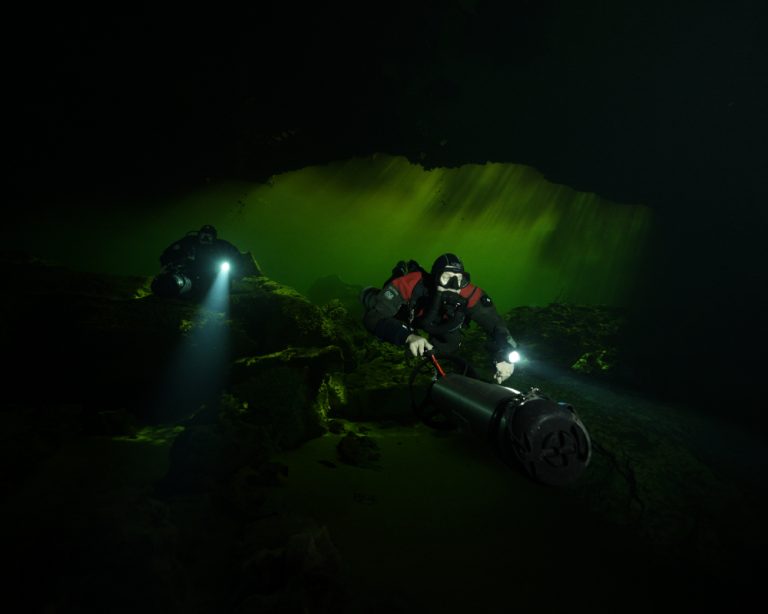What We Do
Why we do this
Provide meaningful knowledge, based on cutting-edge exploration and data capture technology, contributing to the conservation of the natural and cultural resources associated with the Yucatan Peninsula’s aquifer.
Two of the longest known caves on earth are located along the Caribbean coastline of Mexico. Both are completely underwater. Some of the most important archaeological discoveries of our time have been found within them, shedding light on our understanding of the ancient Maya civilization and the earliest human migrations into the Americas. The flooded caves bring life to the entire region, transporting freshwater as they wind their way from the jungle interior to the Caribbean Sea. The area sustains a population of over 1.5 million residents, and is visited by over 10 million tourists each year. Out of sight and out of mind lies the aquifer, the common thread that binds the economic health and social welfare of the region together.
The aquifer is under threat from continued and unchecked development by the tourist industry.
The area’s future is threatened by the inadequacy of both sewage treatment and waste management facilities. Current practices for each of these are outdated, and poorly regulated. The resulting contamination threatens the survival of beaches, reefs, the jungle, and the water quality that every resident and visitor depends upon for a healthy life. Unless the population is better educated about the importance and fragility of the aquifer, the future of this important natural, cultural and economic resource will continue to hang in the balance.

Our Mission
Surfacing Vital Knowledge
- Diving with a purpose
- The foundation of our work
- The last frontier for human exploration on Earth
- Archaeology, Paleontology, Biological and Earth Sciences
- Photogrammetry, Cartography, Sampling, Remote Sensing, IOT
- Major partnerships: UNESCO, INAH-SAS, CONANP, UNAM, UCSD
- Documentaries, Print media, Online content, Teaching material, Public speaking
- Underwater and surface photography/video, Drone imagery, Sound engineering
- Major partnerships: BBC NHU, National Geographic, NHK, New York Times